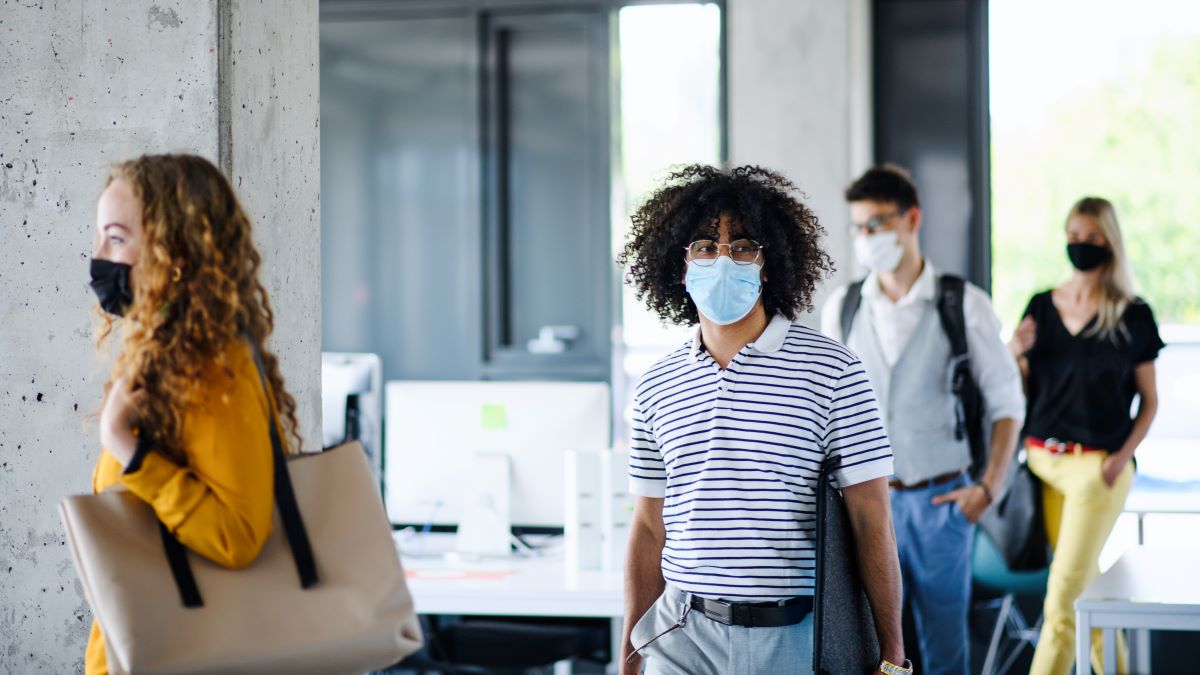Ask the Expert: A Conversation About Mass Entry Screenings with Katie White, Vice President of eHealthScreenings
These videos were published on July 14, 2020, and information about testing may have changed. For the most up-to-date COVID-19 information please visit our COVID-19 information center or visit the websites for the CDC and WHO.
When returning employees to campus, organizations need to consider many aspects as they execute and evolve their screening and testing solutions over the coming months. In a conversation about all things mass entry screenings, Katie White, vice president of eHealthScreenings, provides her expertise and guidance on how to get everyone back to work with efficiency and safety in mind.

What does a mass entry screening event look like?
Depending on the unique needs of each organization, an event can take place outdoors in a drive-up setting, at a major point of entry, indoors in a cafeteria, or even in a common area like a large meeting room on campus. While space is a big player in a successful event, length and staffing are also important factors to think about. If you are in an essential industry like manufacturing, you may need 24-hour coverage as employee shifts vary widely. On the other hand, a minimum window of three hours could work for a smaller, remote populations. Regardless of the length of time you choose, having the adequate amount of staffing to promote safety is key.
What happens when someone is denied entry?
If someone is denied entry, they receive a communication from their employer that explains next steps and identifies their follow up contact who helps ensure they get back to work safely. At Premise, members with suspected or confirmed diagnosis are referred to care navigation for ongoing support. A care navigator then proactively reaches out to them member via phone call, secure message, or video to talk through their care plan. Aside from checking symptoms and providing high-quality care virtually, care navigators can also offer member education around home isolation, identify any challenges they’re experiencing, and provide various strategies to overcome them.
What are some screening best practices that employers should consider?
As you continue to strategize your campus re-opening plans, make sure to communicate often so your workforce knows what to expect when returning to campus – things like traffic flow, screening location, or frequency are important details to share. Additionally, you’ll want to make sure your employees can move in and out of the screening area with ease. As time goes on, you might need to readjust to improve the overall screening experience. While there’s a lot to consider, having a flexible strategy that can adapt to an evolving environment will prove valuable.
Our Recommendation
Premise recommends organizations utilize a multifaceted approach that may include screening and testing, as well as other proven strategies such as physical distancing and requiring masks. Whether used for the continued work of essential employees or the reopening of a building or campus as a remote workforce returns to the physical workplace, screenings can help identify high-risk, contagious individuals. Testing is another tool that supports re-openings and builds confidence within the workforce; however it is only one component of a comprehensive and systematic return-to-the-workplace strategy.
When solving for the preservation of workplace and workforce health and safety, there is not a one-size-fits-all solution. We recognize that helping employees continue to work or return to campus safely is critical to preserving jobs and companies, as well as preventing future outbreaks. Premise is closely monitoring these dynamic times and is working with our clients nationwide to develop best-in-class approaches that are tailored to the unique needs of their population.
For the most up-to-date information on COVID-19 from Premise Health, visit our Coronavirus Information Center. For help developing a strategic mass entry screening solution, contact us.
Next on industry insights.

[UPDATED] COVID-19: Screening and Testing Best Practices
Read the Blog
What Employers Need to Know About President Biden’s Path Out of the Pandemic COVID-19 Action Plan
Read the Blog